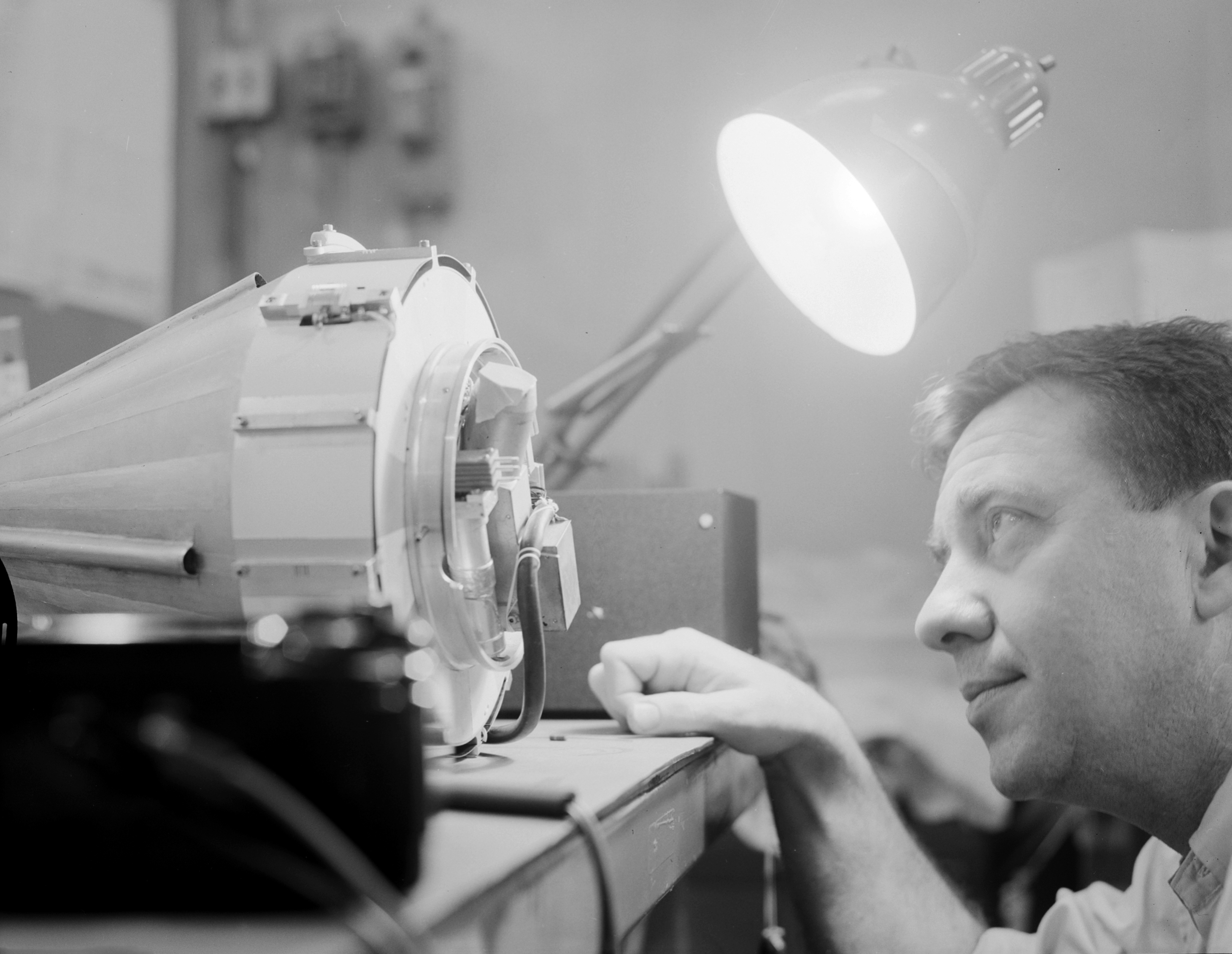James Van Allen and Pioneer 4

| Credit | NASA/Jet Propulsion Laboratory-Caltech |
|---|---|
| Language |
|
Professor James Van Allen of the University of Iowa designed the cosmic ray detector experiment on JPL’s Explorer satellite, launched in 1958. He was also the principal investigator for the radiation experiment that was part of the Pioneer III and IV payloads.
In this photo, Dr. Van Allen is looking at the cone-shaped Pioneer probe, before it was gold plated and painted with stripes (to maintain a temperature of 10-50 degrees C during flight).
After the launch of Pioneer IV on March 3, 1959 the experiment successfully measured radiation found around the Earth. It was also designed to measure lunar radiation, but the flyby distance of 37,000 miles was not close enough for the optical trigger to work.
The instrument used two Geiger-Mueller tubes to detect and measure radiation and a small battery-powered radio transmitter to send the data to Earth. The low-power signal was received by the 85-foot antenna at Goldstone, California -- part of what became known as the Deep Space Network in 1963. The probe also tested technology that would be needed for future lunar photographic missions. After passing by the moon, Pioneer IV went into a heliocentric orbit.
Original image No. 293-4061C
This post was written by Julie Cooper of JPL’s Library and Archives Group.

